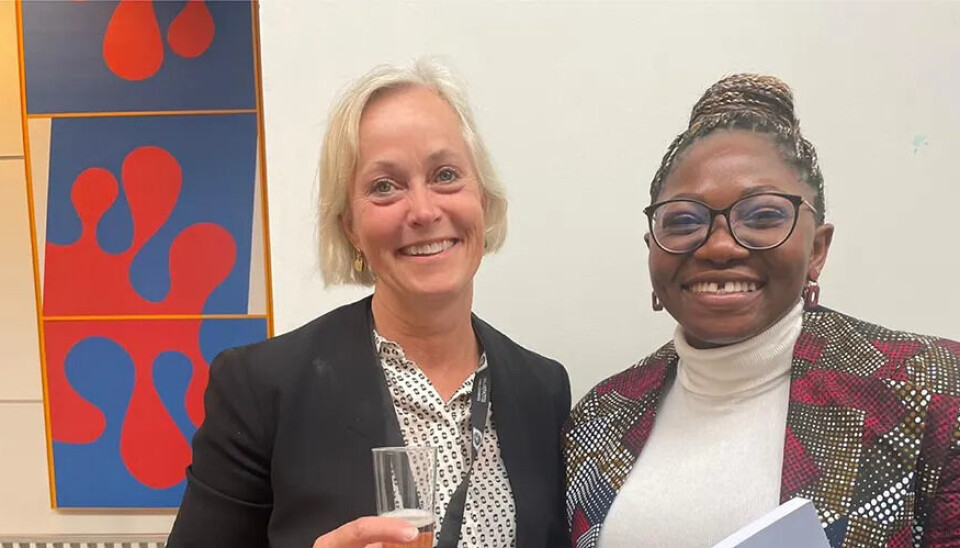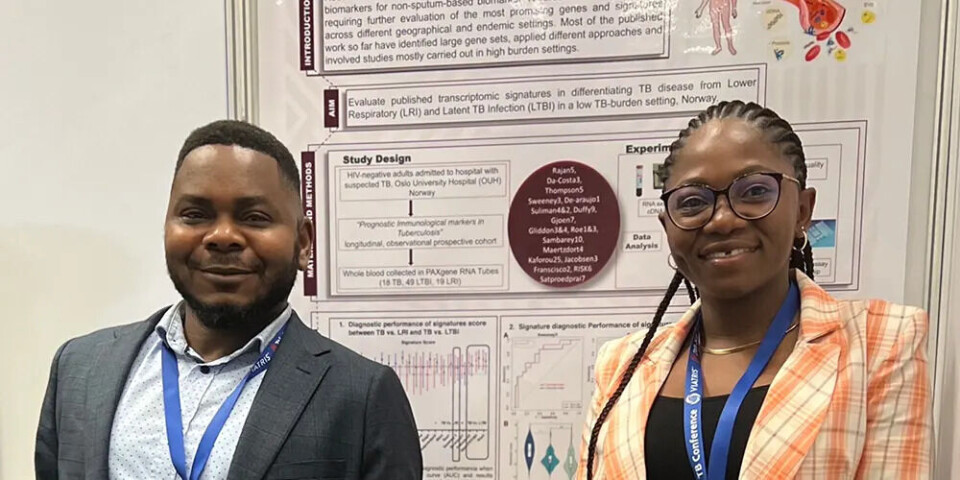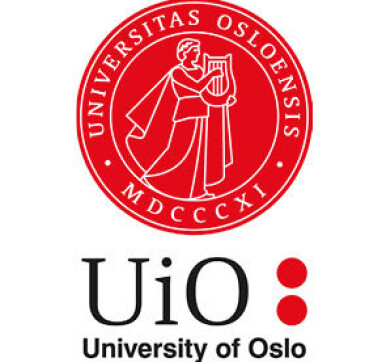THIS ARTICLE/PRESS RELEASE IS PAID FOR AND PRESENTED BY University of Oslo - read more

Better diagnostic tools are needed in the fight against tuberculosis
Rapid diagnosis and treatment are crucial. However, today's testing methods are not good enough. Tests based on blood biomarkers may be the solution.
Many of us believe that tuberculosis has been eradicated, but this is not the case. In large parts of the world, tuberculosis is the infectious disease that takes most lives.
Every year, 1.5 million people die from tuberculosis, according to the World Health Organization (WHO).
South Africa is one of the countries that is most affected.
During the Covid-19 pandemic, the situation became even worse. More people became ill and died from tuberculosis due to lockdowns and poorer access to healthcare.
Urgent need for rapid diagnosis and treatment
Similar to Covid-19, early and rapid testing and treatment are important both for those who are ill and to prevent the spread of the disease to others.
“With the increase in the number of cases and deaths during the Covid-19 pandemic, we cannot stress the need for early, fast, and accurate diagnosis enough,” Bih Hycenta Chendi says.
She is a researcher at Stellenbosch University in South Africa where she works with Professor Novel Chegou. They collaborate with Professor Anne Ma Dyrhol-Riise at the Institute of Clinical Medicine at the University of Oslo.
Several challenges with current tuberculosis tests
Tuberculosis is caused by a bacterium called Mycobacterium tuberculosis. The most common testing method today involves bacterial cultures. Healthcare personnel take samples of the patient's sputum to find out if it contains the bacteria.
“There are several challenges with today's tests. One of them is that it takes a long time to get the result. In addition, they are not that sensitive or accurate,” Chendi explains. “Especially in areas with poor infrastructure, such as several areas in South Africa, there is a great need for new ways of detecting tuberculosis."
Have found a new way to test for tuberculosis
In a new study, Chendi and colleagues have found that some substances in the blood can show whether a person has tuberculosis.
Such substances are called biomarkers.
The biomarkers refer to any measurable biological component in the blood that reflects ongoing immune processes in the body at a particular state.
“We now know more about how the immune system reacts to a tuberculosis infection. This is the reason that some researchers have suggested that these biomarkers may be used to diagnose tuberculosis,” Chendi explains.

Could detect tuberculosis using a blood sample
The researchers analysed blood samples to see if the various biomarkers that had already been identified could be used to diagnose tuberculosis in a setting like Norway, where the prevalence of tuberculosis is low.
“Most of the biomarkers that we looked at could detect with good accuracy whether a person had tuberculosis,” Chendi says.
She explains that this is consistent with what other researchers have found in previous studies.
Additionally, Chendi and her colleagues looked at combinations of different biomarkers.
“Compared to a single biomarker, the combinations of different biomarkers performed even better,” she says.
The tests can be used to monitor treatment response
Patients with tuberculosis are often seriously ill and hospitalised. The treatment involves a prolonged course of antibiotics aimed at eliminating the infection.
In the study, the researchers also investigated whether the biomarkers could be used to monitor the effect of the treatment.
“We saw that the concentration of some of the biomarkers in the blood changed from the time of treatment initiation and when evaluated at week two, month two and month six of treatment, highlighting their usefulness in monitoring treatment response,” Chendi explains.
New tests could reduce the number of unknown cases
The researchers believe it may be possible to develop new and improved tests for tuberculosis based on the biomarkers they examined in the study.
“The results from our study are promising. They show that the biomarkers we investigated have good diagnostic value for tuberculosis,” Chendi says.
Especially in areas heavily affected by the disease and with poor infrastructure, such new tests may be of great importance.
“Such a tool will ensure that we can make the diagnosis quickly and easily. It can also help reduce the number of undiagnosed cases and those affected can receive faster treatment. In particular, the gains will be large in African environments with few resources,” the researcher says.

Examined blood samples from individuals in South Africa and Norway
The study is a collaboration between researchers from the Immunology Research Group at Stellenbosch University and the Chronic Infectious Diseases research group at the University of Oslo (UiO) and Oslo University Hospital (OUS).
The researchers examined blood samples from 107 individuals with tuberculosis, 78 individuals with other lung infections, and 150 individuals without tuberculosis in both South Africa and Norway.
“The comparison between patients in South Africa and Norway made it possible to examine blood samples from people with different backgrounds and who are infected by the Mycobacterium tuberculosis in different parts of the world,” Chendi explains.
She adds that this is useful because it gave them the opportunity to investigate the diagnostic value of these biomarkers in a heterogeneous group with diverse biological and cultural characteristics.
The researchers used various statistical methods to investigate the selected biomarkers in the blood related to immune response.
Reference:
Chendi et al. Utility of a three-gene transcriptomic signature in the diagnosis of tuberculosis in a low-endemic hospital setting, Infectious Diseases, 2022. DOI: 10.1080/23744235.2022.2129779

This article/press release is paid for and presented by the University of Oslo
This content is created by the University of Oslo's communication staff, who use this platform to communicate science and share results from research with the public. The University of Oslo is one of more than 80 owners of ScienceNorway.no. Read more here.
See more content from the University of Oslo:
-
Researcher: "AI weakens our judgement"
-
New, worrying trend among incels, according to researcher
-
Ship’s logs have shaped our understanding of the sea
-
New study: The dilemma of copyright in the Global South
-
How your lifestyle affects your risk of bowel cancer
-
Muslims were pagans, according to the Norse sagas




































